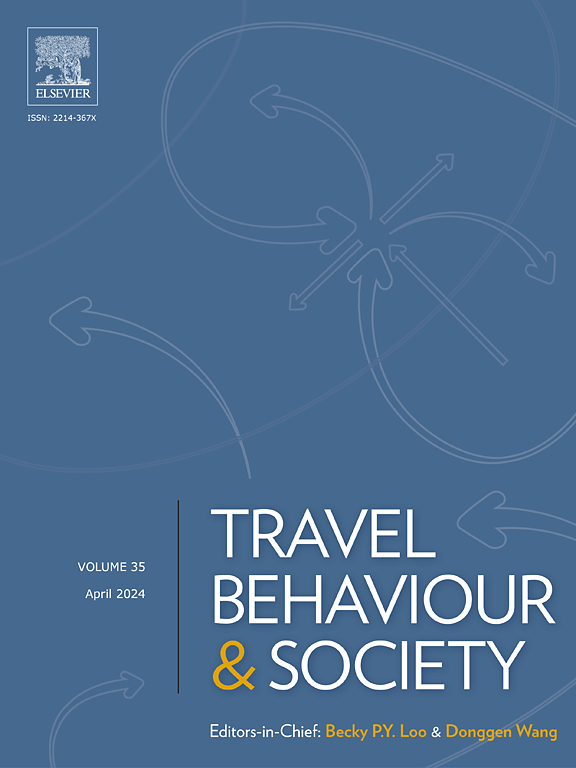利用智能卡数据调查大流行期间居住地点和通勤模式的变化
IF 5.1
2区 工程技术
Q1 TRANSPORTATION
引用次数: 0
摘要
通勤出行通常是城市地区工作日出行的主要部分。因此,通勤距离和出行方式与城市交通的可持续性水平密切相关。COVID-19 大流行导致通勤模式发生了重大变化--通勤出行的长度和频率,特别是公共交通的使用率。在世界面临潜在大流行病持续威胁的情况下,为确保交通的长期可持续性,了解这些变化至关重要。本文通过实证研究,探讨了在 COVID-19 大流行高峰期,北京部分地铁乘客的居住地点和通勤模式是如何变化的。本文使用被动生成的 8,792,539 名地铁用户的智能卡数据来量化导致这些变化的不同因素的相对影响。结果表明,居住地向市中心迁移的趋势明显,这与其他一些国家出现的远离市中心的趋势相反。此外,研究还发现,大流行病对通勤时间较长(超过 45 分钟)的人起到了催化作用,促使他们重新考虑居住地点,以减少通勤时间。因此,这种搬迁导致通勤时间平均缩短。这些研究结果有助于推进与大流行病的长期流动性和可持续性影响有关的现有知识,其中一些知识有望应用于未来的大流行病环境中。本文章由计算机程序翻译,如有差异,请以英文原文为准。
Investigating the changes in residential location and commute patterns during the pandemic using smart card data
Commute trips typically constitute a major share of weekday trips made in urban areas. Hence, commute distances and modes of travel usage are closely linked with the level of transport sustainability of a city. The COVID-19 pandemic has resulted in a significant change in commute patterns – the length and frequency of commute trips and the usage rate of public transport in particular. To ensure the long-term sustainability of transport in a world faced with the persistent threat of potential pandemics, it is crucial to understand these changes. This paper empirically examines how the residential locations and commute patterns of a segment of subway commuters in Beijing changed during the peak of the COVID-19 pandemic. Passively generated smart card data from 8,792,539 subway users were used to quantify the relative impact of different factors contributing to these changes. The results indicate a notable trend of residential relocation towards the city centre that is opposite to the trend of moving away from city centres observed in some other countries. Further, it is observed that the pandemic has acted as a catalyst for individuals with long commute times (over 45 min) to reconsider their locations, aiming to reduce commuting time. Consequently, such relocations lead to an average commute time reduction. The findings contribute to advancing existing knowledge related to the long-term mobility and sustainability implications of the pandemic, some of which are expected to be transferable to future pandemic contexts.
求助全文
通过发布文献求助,成功后即可免费获取论文全文。
去求助
来源期刊

Travel Behaviour and Society
TRANSPORTATION-
CiteScore
9.80
自引率
7.70%
发文量
109
期刊介绍:
Travel Behaviour and Society is an interdisciplinary journal publishing high-quality original papers which report leading edge research in theories, methodologies and applications concerning transportation issues and challenges which involve the social and spatial dimensions. In particular, it provides a discussion forum for major research in travel behaviour, transportation infrastructure, transportation and environmental issues, mobility and social sustainability, transportation geographic information systems (TGIS), transportation and quality of life, transportation data collection and analysis, etc.
 求助内容:
求助内容: 应助结果提醒方式:
应助结果提醒方式:


